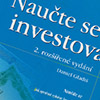The key financial market efficiency and anomalies all investors should know
What moves share price up or down? Is the movement random or is there a mechanism that helps predict what to expect? There are numerous interesting repetitive situations that occur on a stock market exchange during a year that we can either pay attention to or ignore.
Some of those situation re-occur with regularity and actually helps investors to make a better judgement whether to buy or sell. And some are rather random and less predictable. Nonetheless it is worth being aware of both instances. The situation I am talking about are called effects and anomalies of stock market exchange and are actually taught on Universities as a part of the financial curriculum study.
I have handpicked a few that are quite interesting and helpful when trading on the markets.
The Low P/E Ratio Effect
This effect is actually an investment strategy. It focuses on low P/E ratio and is quite popular among all investors. It might be that for this reason was it was so much written and explained about this effect that some even were incorrect interpreted due to wrongly specified sample of shares (P/E ratio is Price to Earnings calculated as market value per share to earnings per share).
The most popular of all studies of the P/E effect is the study supplied by David Dreman (in 1982). He tested the effect on 1250 American shares based on their immediate share value ordered and grouped into 10 different categories. Shares that belonged to group 9 and 10 (which were groups with lowest P/E ratio) demonstrated the best efficiency and performance. The reason why this effect of shares with low P/E ratio are more effective than those with higher might not be ever 100% explained, but often it is quoted that low P/E is accompanied by the companies with low market capitalization. Which means companies that might be overlooked and underestimated.
If you consider following low P/E ratio as your investment strategy please also bear in mind that companies with very weak and bad financial results tend to have low P/E as well.
The size effect
This effect explains that small companies resp. companies with small market capitalization (Small Cap) can deliver extraordinary gains in comparison to bigger companies (Large Cap).
Investors that are favourers of this effect must also bear in mind the twofold rule when trading shares: low gains = low risks, high gains = high risk. There are others cons when buying small companies such as: higher transaction costs (higher spread), low liquidity and high volatility. Also there are often less information available of such companies of not available at all.
Market Capitalization classifications:
- Mega Cap: $200 billion and greater
- Large Cap: $5 billion and greater (over $10 billion in some classifications)
- Mid Cap: $1 billion to $5 billion ($2 billion to $10 billion in some classifications)
- Small Cap: under $1 billion (under $2 billion in some classifications)
- Micro Cap: $50 million to $300 million
- Nano Cap: Under $50 million
The January Effect
Most discussed and monitored effect affects typically companies with low market capitalization (Small Caps). These companies normally experience in the first two weeks in January exceptional growth.
Explanation of this behaviour is that investors upon end of the old year and start of the New Year revisit their strategies, re-balance and change their portfolio. Most frequently than they tend to select smaller companies which triggers the growth of their share price. Another explanation of this effect is that at the end of the year most investors aim to optimize their portfolio in the perspective of coming taxation. They sell shares that their share prices plummet, but start to buy again with the beginning of the New Year.
From this perspective we can also add March (resp. April) when share prices log interesting gains.
The day of the week
Share price movements during individual days of the week has been extensively studied by Gibbons and Hesse in 1981. The result of their study explains that on Monday’s markets generally fall, and on Wednesdays and Fridays they rise. Tuesdays and Thursdays are perceived as neutral trading days with no significant movements.
Some explanation behind this can be found in a fact that most companies, governments and regulators tend to announce bad news by the end of the week and expect that the effect of the negative news would weaken or lose its strengths over the weekend.
Personally, I do reflect on which day I enter into a position because the right timing in this case can mean a difference of several percents. It is without the doubt that you should not follow this effect solely and keep an eye on all other aspects of the deal you want to enter into. But if I exaggerate this effect to its extreme that we should enter into BUY on Monday shortly before the closure of the business and SELL either on Wednesday or Friday.
The Low Market to Book Ratio
Market-to-Book ratio is very popular among investors. Its value demonstrates the rate between immediate share market value and accounting value of the single share. There were several studies that explained that shares with low Market-to-Book ratio (as well as low P/E ratio) have higher growth potential those with higher rate. Interesting is that this effect has historically had the strangest power in France and Japan.
The Mergers and Acquisition Effect
Another effect that gives investors interesting returns or those above expectation is in the moment when two companies merge or one gains acquisition over another. It has been empirically proven share price rockets when merger or acquisition is announced. The only thing that should be taken into consideration is again the timing. When is it best to buy the share? Shortly before the announcement or immediately after the announcement? Unfortunately 2/3 of the share price movement are realized before the announcement which only proves the fact of insiders information being traded and used.
The other effects to follow are
- The New Stock Issues Effect
- The Exchange Listing Effect
- The Surprise/Earnings Effect
- The Closed-End Mutual Fund Puzzle
Evidently it would be wrong to blindly follow just above mentioned effects and anomalies without taking into consideration other aspects of the stock market and things that surround that, for example consider inflation that could impact the economy to the extent that the share prices would react in the given periods opposite to what is described. And strategy of successful investors are not solely based on individual effects but rather on complex criterion that helps them to make the purchase. However these effects should not be neglected and could help and contribute to the getting even more from the market and explain market behaviour during a year.







